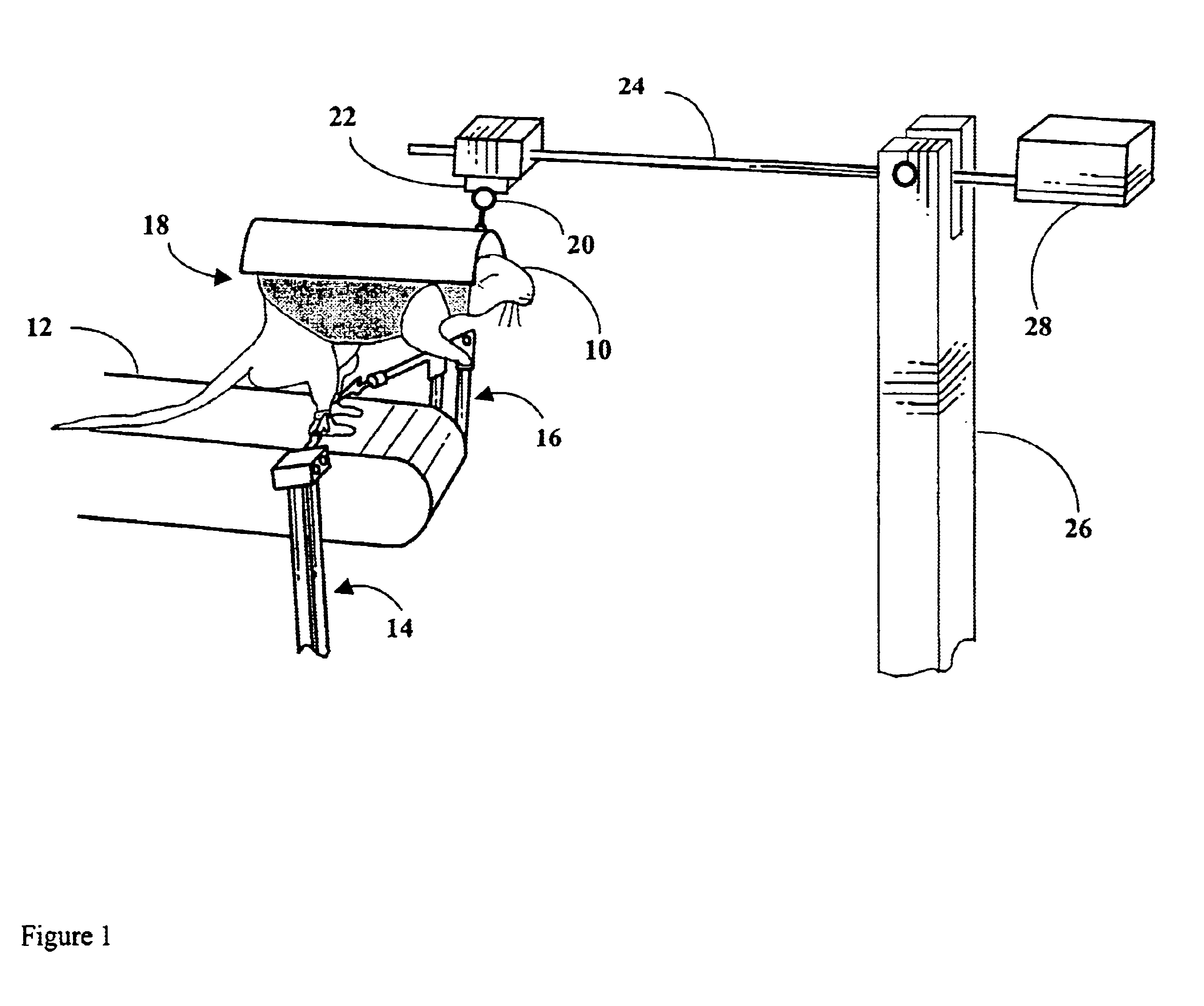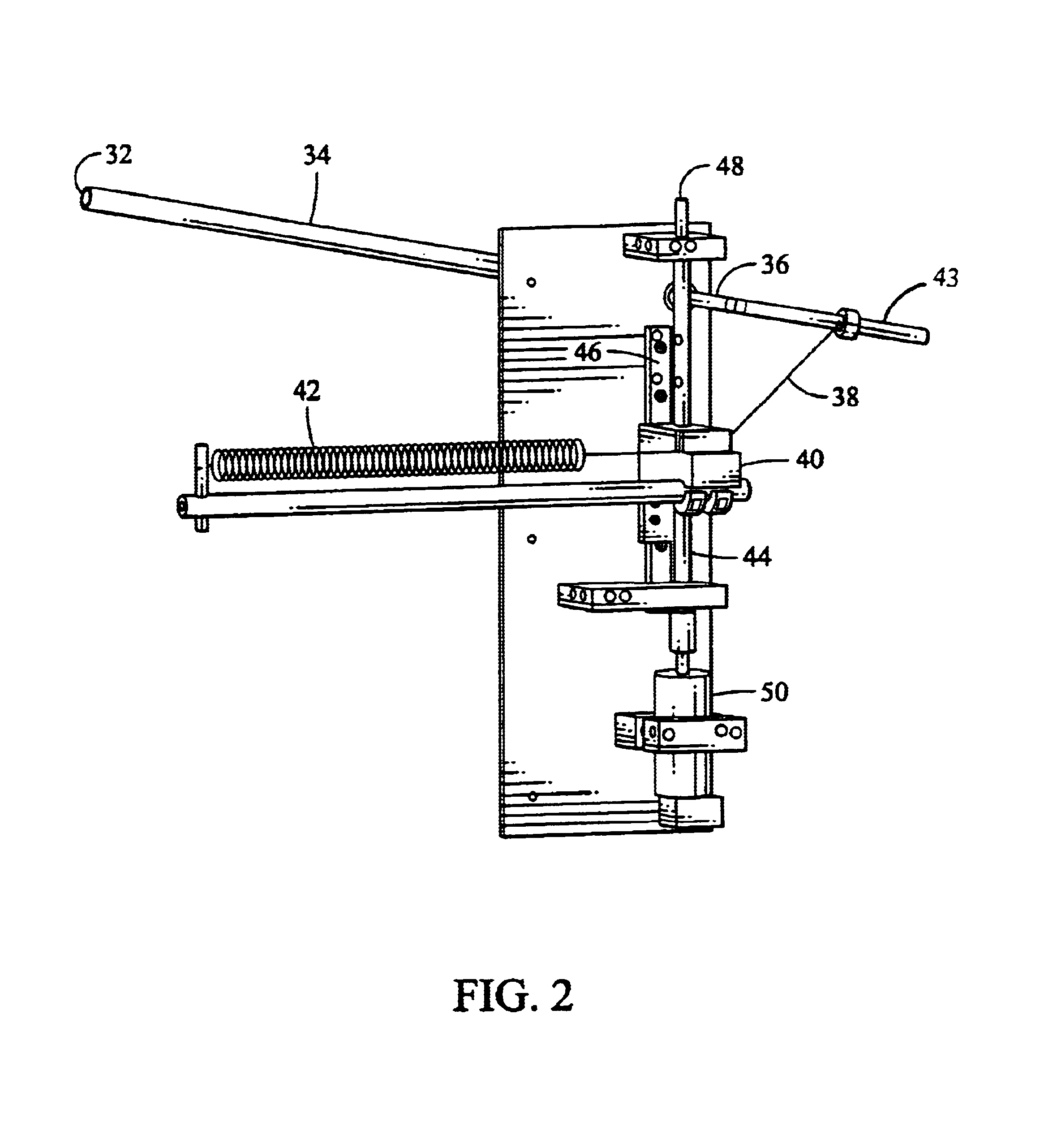Robotic device for locomotor training
- Summary
- Abstract
- Description
- Claims
- Application Information
AI Technical Summary
Benefits of technology
Problems solved by technology
Method used
Image
Examples
example 1
[0066]This example shows that training with the robotic locomotion system improves stepping of spinal transected rats. Rats received complete spinal cord transections five days after birth and began training (two hours of training per week for eight weeks) shortly after weaning. The amount of weight support during training was adjusted to allow a load level on the hindlimbs that was equivalent to half of normal levels. During training over a moving surface provided by a conveyor belt, a Phantom 1.0 robotic arm was attached to each hindlimb shank by a neoprene cuff to record and quantify hindlimb trajectories. In this example, the robotic arms did riot apply assistive force during stepping. Instead, the arms moved passively with the hindlimbs.
[0067]A graph of stepping ability of trained and non-trained spinal transected rats is shown in FIG. 11. Each point on the graph represents the number of rats that successfully stepped on a certain week after training started. Successful steppin...
example 2
[0068]This example shows a way to robotically measure limb movement characteristics of a spinal transected rat during locomotion training. Transections were performed five days after birth, as a more robust recovery of stepping occurs when transections are performed shortly after birth. The transected rat pup was returned to its mother until the pup reached 21 days of age. The rat was then trained two to three times a week for 5-10 minutes per day to perform bipedal, hindlimb stepping on a physical treadmill. Training consisted of manually holding the rats above a treadmill to allow a sufficient amount of loading on the hindlimbs. In this example, the rat was two months old, and could perform alternating, weight-bearing hindlimb stepping on a physical treadmill. However, the rat sometimes failed to initiate swing or dragged its toes during swing. All experiments followed the guidelines of the Animal Use Committee of the University of California, Los Angeles.
[0069]Each hindlimb of th...
example 3
[0073]This example shows that step cycle characteristics are not significantly altered by attachment of robotic arms to rat hindlimbs. Each hindlimb shank was attached to a Phantom 1.0 robotic arm using a neoprene cuff. Rats were suspended from a manually adjustable harness over a conveyor belt moving at a speed of about 11 cm / s. Body weight load was about 75%. Conventional kinematic film analysis was used to compare hip, knee and ankle joint angle displacements at various key points in the step cycle, such as toe off and paw contact, while rats stepped with and without the robotic arms attached. As shown in FIG. 12, hip and knee joint angles with attached robotic arms (white bars) were similar to the corresponding joint angles without attached robotic arms (black bars). For the ankle joint, only slightly greater flexion was apparent as a result of robotic arm attachment.
PUM
 Login to View More
Login to View More Abstract
Description
Claims
Application Information
 Login to View More
Login to View More - R&D
- Intellectual Property
- Life Sciences
- Materials
- Tech Scout
- Unparalleled Data Quality
- Higher Quality Content
- 60% Fewer Hallucinations
Browse by: Latest US Patents, China's latest patents, Technical Efficacy Thesaurus, Application Domain, Technology Topic, Popular Technical Reports.
© 2025 PatSnap. All rights reserved.Legal|Privacy policy|Modern Slavery Act Transparency Statement|Sitemap|About US| Contact US: help@patsnap.com



